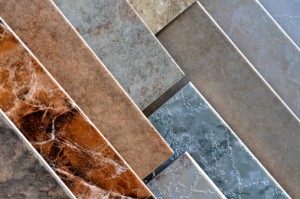Natural Stone Tile Usage Guide
Learn how to get the best results from natural stone tile in different applications.
 Natural stone tile can be used to create a variety of different styles, from rustic to elegant. However, there are some special factors you need to take into account when choosing a natural stone product as compared to a ceramic tile.
Natural stone tile can be used to create a variety of different styles, from rustic to elegant. However, there are some special factors you need to take into account when choosing a natural stone product as compared to a ceramic tile.
Natural Variation
Any type of natural stone tile will have variations in color and pattern. These variations will be most noticeable in variegated stones such as marble and travertine, but may also be apparent in solid-color stones like slate and limestone. For this reason, it is best to ensure that you order all of the tile you need at one time, from the same supplier. This should ensure that the tile was quarried at the same time from the same location, and the variations should harmonize from stone to stone. Furthermore, you will want to have the tile installer work from several boxes at once to mix in all the variations evenly. This should prevent issues like a stone visibly changing color from one side of the room to the other.
Sealants
Many types of natural stone can be damaged by exposure to water and chemicals and therefore need to be protected with a sealant. Stones high in calcium, such as limestone and travertine, are especially vulnerable to damage from even mild acids, such as those found in soda, coffee, and fruit juice. Unless a sealant is used, the stone could become etched or dull due to contact with the acid. Just about any kind of stone can stain if left in contact with a liquid for too long, and some stones contain iron and other minerals that can rust or bleed in humid or wet environments. Before choosing a stone tile for the bathroom or other wet area, be sure you understand all its properties and how a sealant will affect it.
Maintenance
Natural stone tile can last for up to 50 years, provided you take proper care of it. Any sealants will have to be reapplied periodically, and stones that have had pores or gaps filled may have to be repaired. For floor tile, the most important thing is to keep abrasive sand, grit, and dirt off the stone. Your best bet is to place rugs or mats in entryways and use a dry dust mop on the tile frequently, followed by a soft rag mop with mild soap. Do not under any circumstances use any kind of lemon or vinegar cleaner on your stone, and avoid acidic products in general.
